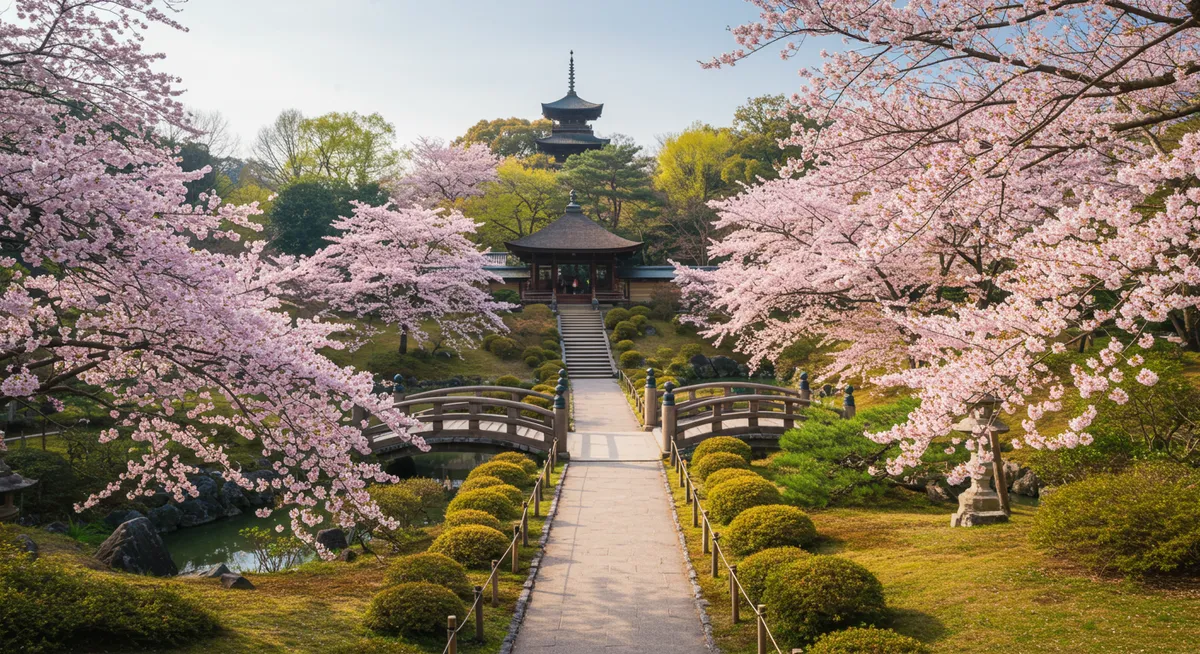
Suizenji Jojuen Garden Visitor Guide
Table of Contents
Want to find the best travel deals for this destination? Chat with our travel hacking specialist!
Get Travel HacksCategory: suizenji-jojuen-garden-visitor-guide
Your Essential Suizenji Jojuen Garden Visitor Guide
Having explored countless serene landscapes across Japan, I can confidently say that Suizenji Jojuen Garden in Kumamoto offers a truly unique and tranquil experience. This exquisite traditional Japanese garden, dating back to the 17th century, is not merely a collection of plants and stones but a living masterpiece. It beautifully recreates the 53 stations of the historic Tokaido Road, complete with a miniature Mount Fuji. As a seasoned traveler who’s wandered its peaceful paths, I've gathered all the essential information to help you navigate this stunning Kumamoto attraction. This Suizenji Jojuen Garden visitor guide aims to ensure you make the most of your trip to this remarkable historical site.
Unveiling Suizenji Jojuen's Historical Tapestry
The genesis of Suizenji Jojuen Garden dates back to 1636, initially serving as a tea retreat for the Hosokawa clan, Kumamoto's ruling daimyo family during the Edo Period. It's a prime example of a traditional kaiyu-shiki (stroll garden), designed to be appreciated by walking along its winding paths. The garden's layout masterfully mimics the ancient Tokaido road, which connected Edo (modern Tokyo) with Kyoto, featuring miniature replicas of its 53 stations. This historical context enriches your visit, allowing you to trace a symbolic journey. Exploring the garden reveals centuries of meticulous landscaping and artistic vision, making it a pivotal part of any Kumamoto travel guide.
Key Features and Scenic Beauty
The star of Suizenji Jojuen Garden is undoubtedly the miniature Mount Fuji, a prominent conical hill that captivates visitors with its perfectly sculpted form. Surrounding this iconic landmark is a large, spring-fed pond, home to various colorful koi fish, which adds to the garden's vibrant ecosystem. You'll find several charming teahouses, including the Kokin Denju-no-Ma, a traditional thatched-roof teahouse moved from Kyoto, where you can enjoy matcha tea while overlooking the serene scenery. The pure spring water feeding the pond is renowned for its clarity and freshness, originating from Mount Aso. I always recommend taking time to simply sit and absorb the tranquil ambiance; it’s truly restorative. This stunning garden provides endless picturesque opportunities for any photographer on a trip to Asia.
Planning Your Suizenji Jojuen Visit: Practicalities
To fully experience Suizenji Jojuen Garden, understanding the practical aspects is key. The garden is typically open from 8:30 AM to 5:00 PM (last entry 4:30 PM), though hours can vary slightly by season. Admission fees are modest, usually a few hundred yen for adults, making it an accessible attraction. Reaching the garden is convenient via public transport; the Kumamoto City Tram (Line A) stops directly at Suizenji Koen, just a short walk away. I always check current opening hours before heading out, especially if planning a visit during holidays. Knowing the best time to visit Kumamoto can further enhance your garden experience, as seasonal changes offer different views.
Tips for an Unforgettable Garden Experience
To truly immerse yourself in Suizenji Jojuen Garden, consider visiting early in the morning when it's less crowded, allowing for a more peaceful stroll. Wear comfortable shoes, as you'll be walking on gravel paths. Don't rush; take your time to appreciate the intricate details of the landscape, from the perfectly pruned trees to the carefully placed stones. Enjoying a traditional matcha tea at one of the teahouses adds a wonderful cultural layer to your visit. For those looking to explore more, the garden is a convenient stop on any Kumamoto itinerary 3 days plan. Nearby attractions include Kumamoto Castle, though it's important to note the Kumamoto Castle tickets and opening hours are separate.
Frequently Asked Questions
How long does it take to explore Suizenji Jojuen Garden?
Is Suizenji Jojuen Garden accessible for wheelchairs or strollers?
Can I eat or drink inside Suizenji Jojuen Garden?
Suizenji Jojuen Garden stands as a testament to Japan’s timeless aesthetic and gardening mastery, offering a serene escape in the heart of Kumamoto. This Suizenji Jojuen Garden visitor guide provides the practical insights needed for a smooth and enriching experience. Whether you're captivated by its historical significance, the perfectly sculpted landscapes, or simply seeking a moment of peace, the garden delivers. Remember to take your time, absorb the tranquility, and perhaps even enjoy a traditional tea ceremony. Start planning your Kumamoto adventure today and allow this exquisite garden to be a highlight of your journey.